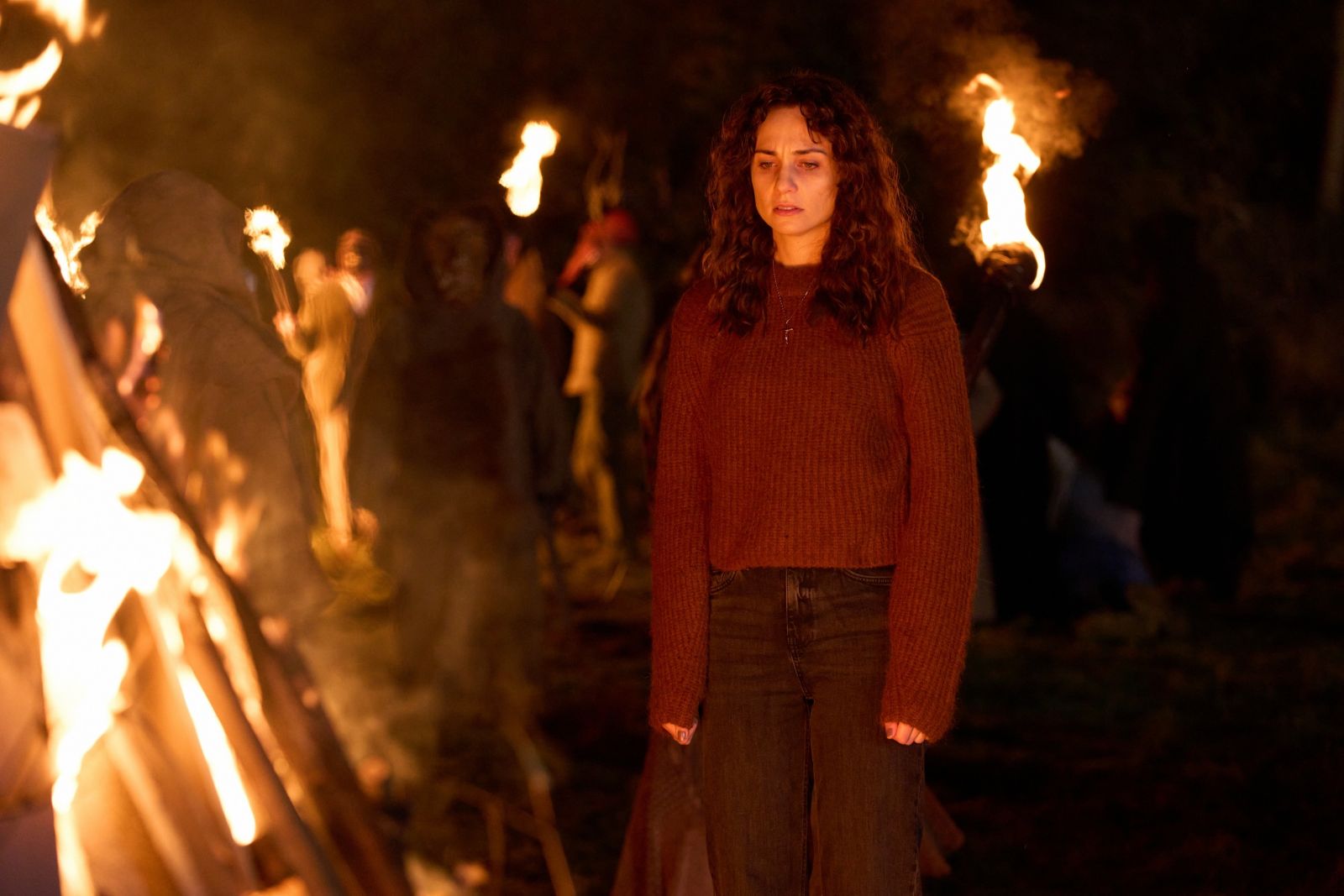The folk horror revival continues, and despite a certain level of similarity between most entries, there’s always something enticing about the hidden pre-Christian history of the British Isles. The myth, legends, and folklore beckon us from down the centuries and they hold a siren call. When you have established, ‘legitimised’ religion locking (sometimes literal) horns with these ancient tales, it makes for a tasty prospect, as The Wicker Man demonstrates so well. Lord of Misrule follows in the footsteps of Robin Hardy‘s beloved classic as a vicar must reckon with the deeply-rooted paganism of her new parish. Also drawing on modern folk horrors like Kill List, and The Witch, some intriguing ideas on the nebulous structures of faith, and a pitch-perfect creepy turn from Ralph Ineson, a man seemingly hewn from earth and shale and peat himself, keep the sense of over-familiarity at bay.
Rachel Holland (Tuppence Middleton) is a vicar who takes a new role in a parish in a picturesque country village. When her daughter Grace (Evie Templeton) goes missing after playing the Harvest Angel at the local festival, the villagers help Rachel and her husband Henry (Matt Stokoe) to search for the girl. The deeper Rachel digs, the more dark secrets are unearthed, related to the figures of the Lord of Misrule and the demon Gallowgog, who loom large in the mythology of the village.
Director William Brent Bell goes for atmosphere and brings an outsider’s eye to its familiar genre beats of sinister Albion. Known for lighter, dare one say campy, fare like The Boy and Orphan: First Kill, Bell does a good job patiently assembling writer Tom de Ville‘s grab bag of fun tropes into an entertaining and, at times, weirdly cosy little horror. It’s uneven, but in a fluid, not a jarring way. It feels variously like an Agatha Christie mystery, The Woman in Black, Don’t Look Now, and Antlers. Amidst it all, and exemplifying this protean energy is Ineson’s Jocelyn Abney, an interesting figure who appears to be the keeper of the old ways, yet whose child is presumed to be a victim of Gallowgog. He also exemplifies that for all it may seem to want the viewer to be on uncertain ground, ultimately Lord of Misrule is going to go where you expect, which feels like a missed opportunity.
The protagonist of Rachel is also a missed opportunity, not just because she functions more as a conduit for the unspooling narrative than an active participant. As a clerical figure, much more could have been made of her position of authority within the church in comparison with the adherents of the Old Ways. The initial dichotomy is established and then largely forgotten until the third act. For long periods it’s easy to forget that Rachel is a vicar at all. Tuppence Middleton is entirely fine in the role, but rarely gets a chance to shine. With our main character often a passive figure, it’s no surprised that Henry is sidelined entirely until one dramatic that lacks impact, principally because he is so relegated to the margins of the narrative.
This negation of actual character does a disservice to what Lord of Misrule does really well, examines the different way shepherds control their flock, and how blindly those sheep are willing to follow. It is interesting that the parishioners seem to be happy to follow both Rebecca and Jocelyn without necessarily seeing any contradictions between their Christian and pagan beliefs. This also speaks to the syncretic nature of Christianity and its malleable history in enfolding other cultural practices into its own belief system. Here it departs from the Wicker Man template where Edward Woodward‘s Sergeant Howie represents a monolithic Christianity that is fixed and unyielding, and therefore lost when faced with an environment where it doesn’t dominate. Christianity in Lord of Misrule can bend to adapt and, as implied by the figure of Rachel, eventually absorb.
Available on Digital Platforms from Mon 8 Jan 2024


Comments